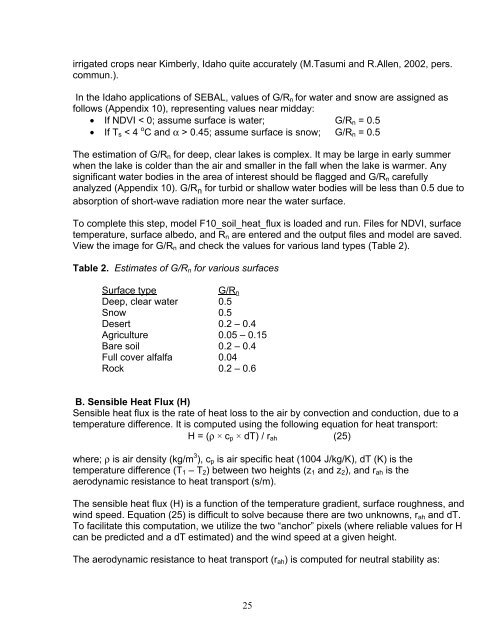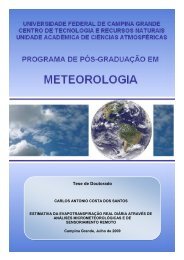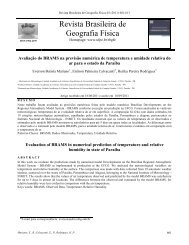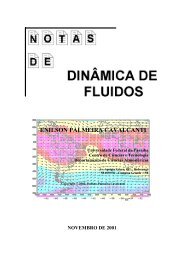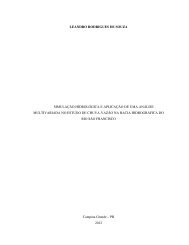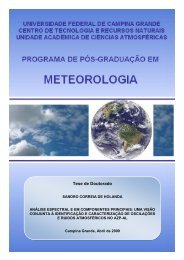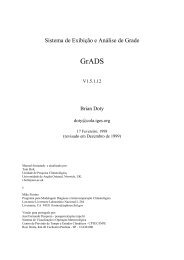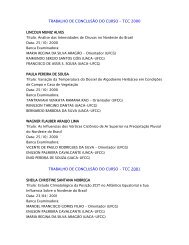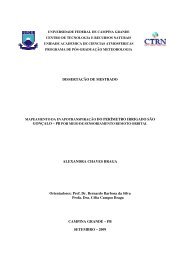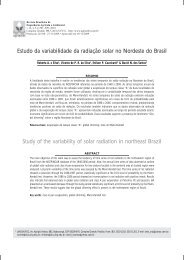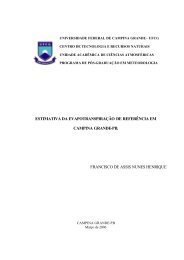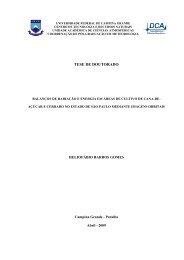Create successful ePaper yourself
Turn your PDF publications into a flip-book with our unique Google optimized e-Paper software.
irrigated crops near Kimberly, Idaho quite accurately (M.Tasumi and R.Allen, 2002, pers.commun.).In the Idaho applications of <strong>SEBAL</strong>, values of G/R n for water and snow are assigned asfollows (Appendix 10), representing values near midday:• If NDVI < 0; assume surface is water; G/R n = 0.5• If T s < 4 o C and α > 0.45; assume surface is snow; G/R n = 0.5The estimation of G/R n for deep, clear lakes is complex. It may be large in early summerwhen the lake is colder than the air and smaller in the fall when the lake is warmer. Anysignificant water bodies in the area of interest should be flagged and G/R n carefullyanalyzed (Appendix 10). G/R n for turbid or shallow water bodies will be less than 0.5 due toabsorption of short-wave radiation more near the water surface.To complete this step, model F10_soil_heat_flux is loaded and run. Files for NDVI, surfacetemperature, surface albedo, and R n are entered and the output files and model are saved.View the image for G/R n and check the values for various land types (Table 2).Table 2. Estimates of G/R n for various surfacesSurface typeG/R nDeep, clear water 0.5Snow 0.5Desert 0.2 – 0.4Agriculture 0.05 – 0.15Bare soil 0.2 – 0.4Full cover alfalfa 0.04Rock 0.2 – 0.6B. Sensible Heat Flux (H)Sensible heat flux is the rate of heat loss to the air by convection and conduction, due to atemperature difference. It is computed using the following equation for heat transport:H = (ρ × c p × dT) / r ah (25)where; ρ is air density (kg/m 3 ), c p is air specific heat (1004 J/kg/K), dT (K) is thetemperature difference (T 1 – T 2 ) between two heights (z 1 and z 2 ), and r ah is theaerodynamic resistance to heat transport (s/m).The sensible heat flux (H) is a function of the temperature gradient, surface roughness, andwind speed. Equation (25) is difficult to solve because there are two unknowns, r ah and dT.To facilitate this computation, we utilize the two “anchor” pixels (where reliable values for Hcan be predicted and a dT estimated) and the wind speed at a given height.The aerodynamic resistance to heat transport (r ah ) is computed for neutral stability as:25


